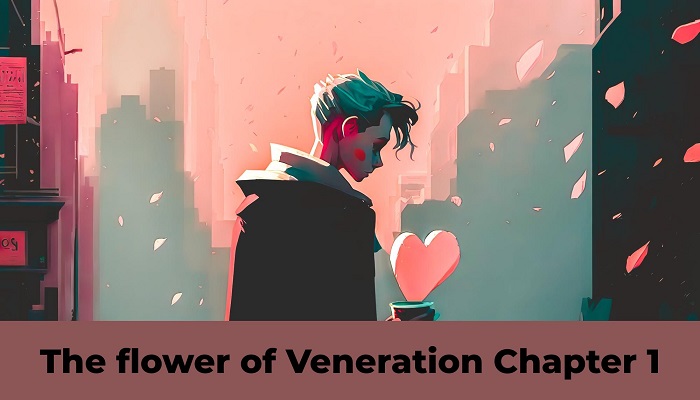The Flower of Veneration Chapter 1: In the realm of flora. There exists a mystical allure that has captivated human hearts for centuries. Flowers with their delicate petals and vibrant hues have inspired awe reverence or even worship in various cultures across the globe. In this chapter we embark on a journey. To explore the profound significance of flowers in religious and spiritual practices uncovering the hidden meanings. Behind their symbolic presence and unraveling the intricate tapestry of floral veneration.
1. Blossoming Beginnings: A Historical Prelude
1.1 Origins of Floral Worship
1.2 Ancient Rituals and Ceremonies
1.3 Evolution of Floral Symbolism
From the dawn of civilization humanity has been entranced by the ethereal beauty of flowers. In ancient times civilizations such as the Egyptians. Greeks or Romans revered flowers as divine manifestations. Weaving them into their religious rites and mythological narratives. The lotus flower for instance held profound significance in ancient. Egyptian culture symbolizing rebirth or the best eternal cycle of life. Similarly: The Greeks associated flowers like the rose and the iris with deities such as Aphrodite and Hermes. Attributing divine qualities to these botanical marvels.
2. Petals of Power: The Symbolism of Flowers
2.1 Language of Flowers
2.2 Spiritual Significance
2.3 Cultural Context
Flowers communicate a silent language. A lexicon of symbols that transcends verbal expression. The Victorian era witnessed the emergence of floriography. A practice where flowers were used to convey hidden messages and sentiments. Each bloom bore its own symbolic meaning from the very purity of the lily to the passion of the red rose. In spiritual traditions such as the Hinduism and Buddhism. Flowers play of a pivotal role in rituals and offerings symbolizing purity devotion and enlightenment. The lotus with its roots in the murky depths of water and its petals reaching towards the heavens. Epitomizes spiritual growth and the transcendence across cultures.
3. Sacred Gardens: The Sanctuary of Floral Devotion
3.1 Temples of Nature
3.2 Botanical Sanctuaries
3.3 Healing Gardens
In the heart of bustling cities and serene landscapes. like sacred gardens stand as testament to humanityes reverence for nature’s bounty. These sanctuaries of floral devotion serve as places of solace reflection or spiritual rejuvenation. From the best Hanging Gardens of Babylon to the Zen gardens of Japan. These horticultural marvels evoke a sense of the harmony and tranquility. Inviting visitors to commune with the divine through of the good language of flowers. Moreover the therapeutic benefits of garden therapy are well documented. With flowers and plants offering healing properties for the body mind and soul.
4. Cultivating Connection: Personal Practices of Floral Reverence
4.1 Floral Meditation
4.2 Flower Essences and Aromatherapy
4.3 Gardening as a Spiritual Practice
In our fast paced modern world. Reconnecting with nature’s wisdom becomes increasingly vital for our well being. Engaging in practices such as floral meditation. Where one immerses oneself in the sights scents and sensations of flowers can foster a profound sense of connection and inner peace. Additionally flower essences and aromatherapy harness the therapeutic properties of plants. Offering holistic healing for the body mind and spirit. Whether tending to a backyard garden or cultivating a tiny indoor oasis. Gardening serves as a sacred act of co creation with nature nurturing our connection to the earth and the divine.
5. The Eternal Bloom: Nurturing the Seeds of Reverence
5.1 Cultivating Gratitude
5.2 Honoring the Sacred in Everyday Life
5.3 Spreading Seeds of Compassion
As we navigate the complexities of the modern existence. Let us not of forget the timeless wisdom encoded within the petals of a flower. Cultivating gratitude for the best abundant beauty that surrounds us. We can awaken to the sacredness inherent in every moment. By honoring the divine presence within the ourselves and all living beings. We sow seeds of compassion and understanding nurturing a world where are the flower of veneration continues to the flourish in hearts and minds alike.
Frequently Asked Questions (FAQs)
1. What is the significance of offering flowers in religious ceremonies?
In many religious traditions. Offering the flowers symbolizes devotion purity and reverence for the divine. Flowers are believed to embody the qualities of the divine and serve as a bridge. Between the earthly and spiritual realms.
2. How can I incorporate floral reverence into my daily life?
You can start by bringing fresh flowers into your home, practicing floral meditation, or creating a small garden sanctuary. Engaging with flowers mindfully can cultivate a deeper connection to nature and the sacred.
3. Are there specific flowers associated with different spiritual beliefs?
Yes, various flowers hold symbolic significance in different spiritual traditions. For example: The lotus is revered in Hinduism and Buddhism. While the rose holds significance in Christianity and Sufism.
4. What is the meaning behind the language of flowers?
The language of flowers also known as floriography. Assigns specific meanings to different blooms. For example : The rose symbolizes love and passion while the lily represents purity and rebirth.
5. How can gardening serve as a spiritual practice?
Gardening allows individuals to the connect with the rhythms of nature. Cultivate mindfulness and nurture a sense of co creation with the earth. It can be a deeply enriching and spiritually fulfilling endeavor.
